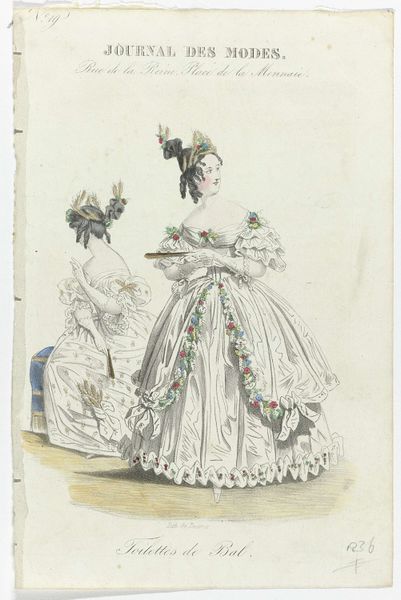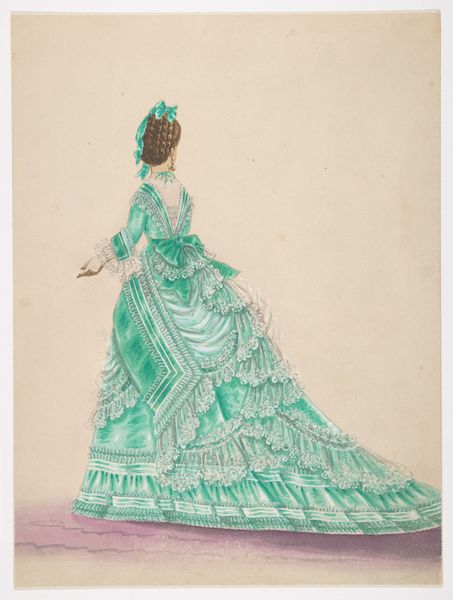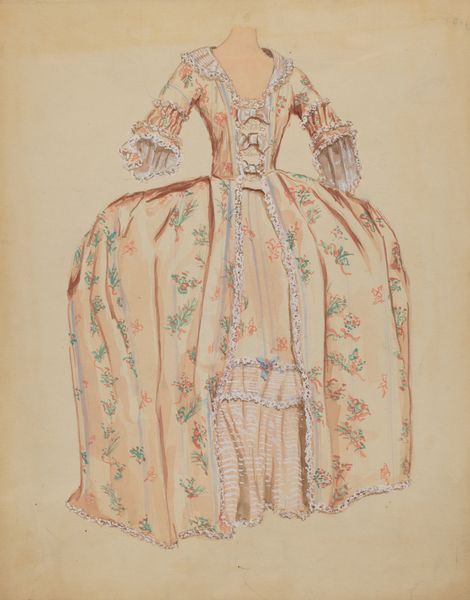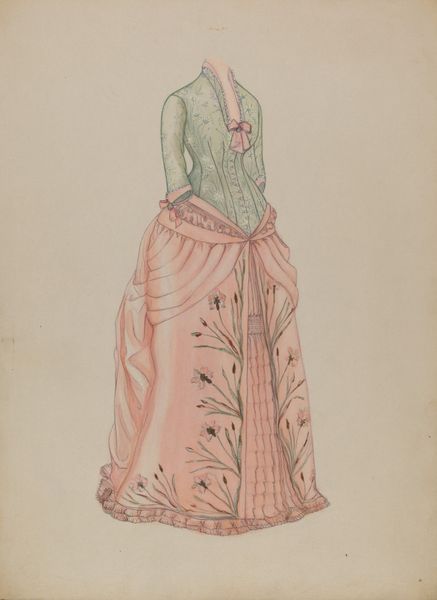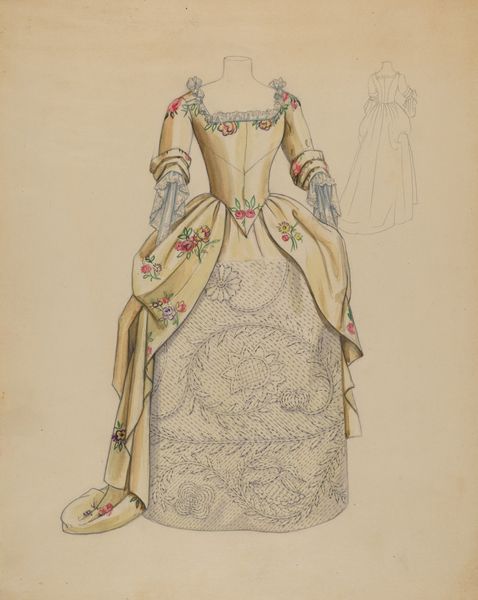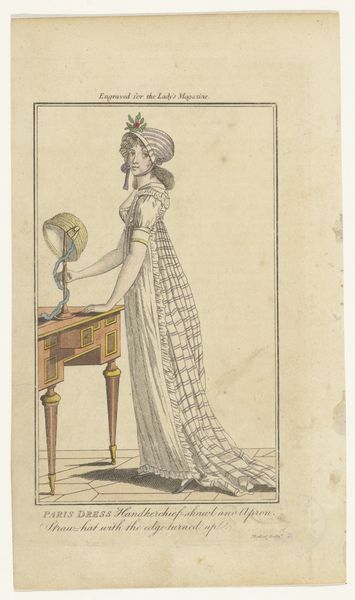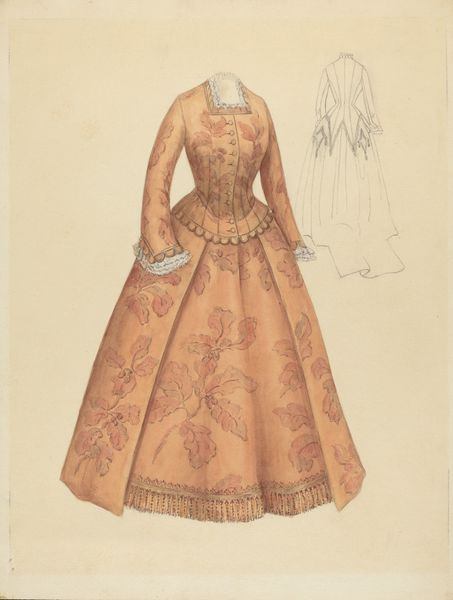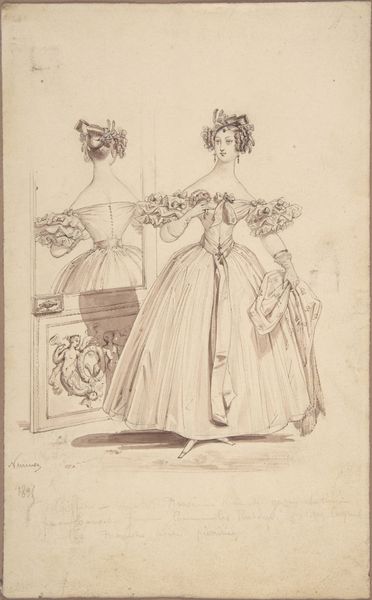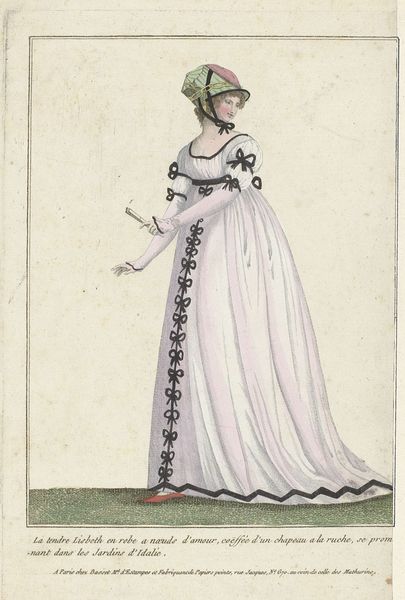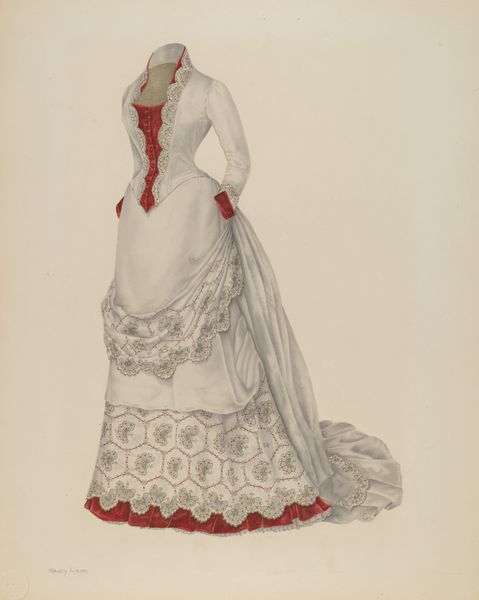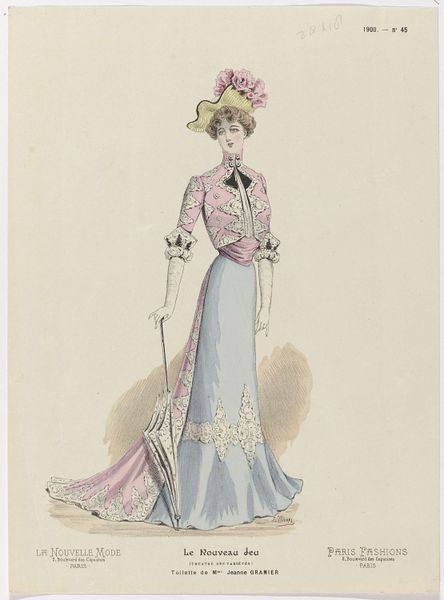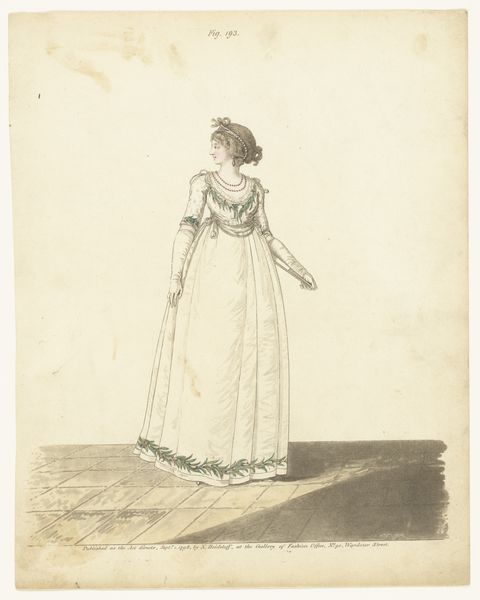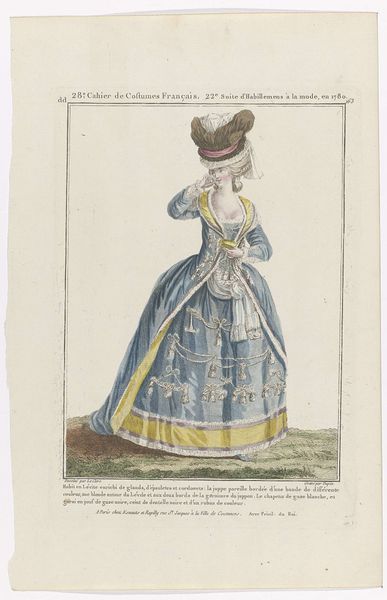
Dimensions: sheet: 11 1/16 x 7 3/4 in. (28.1 x 19.7 cm)
Copyright: Public Domain
Curator: Here we have "Fashion Study: Woman in a White Floral Dress," an anonymous work dating roughly between 1875 and 1900, currently residing at the Metropolitan Museum of Art. It's a delicate piece rendered with watercolor and drawing techniques. Editor: My first impression is of lightness. The colors are so muted, the lines delicate. It’s like a whisper of a memory, this ghostly woman. Curator: Indeed. The composition relies heavily on line and wash, creating a somewhat idealized, romanticized version of the figure. Notice how the artist emphasizes the contours of the dress and the details of the floral pattern. This kind of precise depiction aligned with academic art principles. Editor: Looking at the layers and ornamentation in the dress itself—it really speaks to the excesses of the era. How restrictive fashion was! How much time and labor must have gone into producing such a garment? This image functions as a record, however idealized, of social structure and economic privilege. Curator: Quite so. But I would argue that the artist's interest lay less in social critique and more in exploring form. Consider the relationship between the dress's sweeping train and the figure’s upright posture. It creates a fascinating interplay of horizontals and verticals. Also, there's a visual rhyme of circularity at the crown with her flower crown that I find arresting. Editor: But wasn't it also about creating a specific vision of womanhood? Delicate, ornamented, a passive object of display. The image participated in constructing those ideals. Even the technique, that soft watercolor, contributes to this sensibility. Curator: Well, I think regardless of intent, the artwork stands alone now as an important document of design. What strikes you most, in conclusion? Editor: Its layered meanings. How one image can be interpreted across so many different lenses—personal, formal, historical. It becomes like a Rorschach blot. Curator: Yes. It's that ambiguity, the capacity for varied interpretations, that keeps an artwork alive. Thank you for joining me today.
Comments
No comments
Be the first to comment and join the conversation on the ultimate creative platform.
